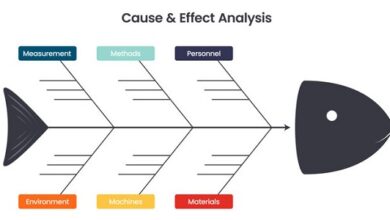What is inflation in economics with Causes Measurement and types
Definition of Inflation
Inflation is the widespread and sustained increase in the prices of goods and services in a country over a sustained period of time, usually one year. When the general price level rises, fewer goods and services are purchased with each unit of currency. In other words, inflation reflects the decrease in the purchasing power of the currency: a loss of the real value of the internal medium of exchange and unit of measure of an economy. To measure inflation growth, indices are used, which reflect the percentage growth of a weighted ‘basket of goods‘. The inflation measurement index is the Consumer Price Index (CPI). In this article we will define you the inflation in economics
Causes of Inflation
There are three types of inflation:
Inflation by consumption or demand. This inflation obeys the law of supply and demand. If the demand for goods exceeds the capacity to produce or import goods, prices tend to increase.
Inflation by costs. This inflation occurs when the price of raw materials (copper, oil, energy, etc.) increases, which makes the producer, seeking to maintain his profit margin, increase his prices.
Self-built inflation. This inflation occurs when a strong future price increase is anticipated, and then they begin to adjust beforehand so that the increase is gradual.
Inflation generated by inflation expectations (vicious circle). This is typical in countries with high inflation where workers ask for wage increases to counteract inflationary effects, which leads to an increase in prices by employers, causing a vicious circle of inflation.
Classification of inflation by its magnitude
Inflation according to the magnitude of the increase is usually classified into different categories:
Moderate inflation: Moderate inflation refers to the slow increase in prices. When prices are relatively stable, people trust it, putting their money in bank accounts. Either in checking accounts or low-yield savings deposits because this will allow them to make their money worth as much as in a month or a year. In themselves, people are willing to commit their money to long-term contracts, because they think that the price level will not deviate far enough from the value of an asset that they can buy or sell.
Runaway inflation: Runaway inflation occurs when prices increase rates in the two or three digits of 30, 120 or 240% in an average period of one year. When rampant inflation is established, great economic changes emerge. Many times in contracts it can be related to a price index or it can also be to a foreign currency, such as the dollar. Since money loses its value very quickly, people try not to have more than they need; that is, they maintain enough to live with what is essential for the sustenance of family members.
Hyperinflation: It is an abnormal inflation in which the price index increases by 50% per month, that is, an annualized inflation of almost 13,000%. This type of inflation announces that a country is experiencing a severe economic crisis; Because money loses its value, purchasing power (the ability to buy goods and services with money) decreases rapidly and the population seeks to spend money before it totally loses its value; When a hyperinflation occurs, the salary increase in a matter of days or even daily becomes essential. This type of inflation is usually due to the fact that governments finance their expenses by issuing inorganic money without any type of control, or because there is no good system that regulates the income and expenditures of the State.
How is inflation stopped?
To stop inflation, central banks tend to increase the interest rate on public debt. In this way, interest rates on consumer loans (credit cards, mortgages, etc.) are increased. As consumer interest rates rise, demand for products slows down.
The negative side of this control is that by slowing down the demand for products, the industry that produces them is held back, which can lead to economic stagnation and unemployment.
The inflation is a general rise in the price level of an economy, measured as the percentage change in those prices. Although the CPI and the GDP deflator tend to show similar results, there are important differences between the two indicators that can result in disparate measures. First, they reflect a different set of products and services, and second, they weight prices differently.
How Inflation is measured
Consumer price index
The CPI is an indicator that measures the average variation in the prices of goods and services during a given period of time in an economy. Its human language. The objective is to measure the cost of living and show the effects of inflation on individual consumers.
Calculating inflation using the CPI follows a four-step process:
1) Fixing the shopping basket
The CPI shopping basket represents the goods and services that are purchased for the consumption of a specific population. For example, in Spain this basket includes more than 479 items that are divided into twelve main groups: Food and non-alcoholic beverages, transport, housing, HORECA (hotels, restaurants and coffee), leisure and culture, clothing and footwear, kitchenware, medicines , communications, alcoholic beverages and tobacco, and teaching. Finally, there is a heading called ‘others’ that includes those products not contained in the previous groups.
2) Calculation of the cost of the basket
Once the basket is fixed, the next step in calculating the CPI is to find the current and previous prices of all goods and services. Prices are collected from a wide range of sources, such as retailers, supermarkets, department stores, and websites where households shop. Another set of prices is also collected from government authorities, energy providers, and real estate agents.
3) Computation of the index
The CPI is an index number, so next we need to define a base year. The base year serves as a reference point to compare some years and others. The index is then calculated by dividing the price of the basket of goods and services in a given year by the price of the same basket in the base year. This ratio is multiplied by 100, which results in the CPI. The base year the CPI always amounts to 100.
4) Final calculation of inflation
Finally, once we have the CPI, we can calculate the inflation rate. Specifically, the inflation rate is the percentage change in the index from one period to the previous one. To calculate it, we can use the following formula:
Inflation rate = [(CPI year 1-CPI year 0) / CPI year 0] * 100%
GDP deflator
The GDP deflator is a measure of the price level of all final goods and services produced domestically in an economy. It can be calculated as the ratio of nominal GDP to real GDP multiplied by 100. This formula shows changes in nominal GDP that cannot be attributed to changes in real GDP.
GDP deflator = ([nominal GDP / real GDP] * 100)
In other words, the GDP deflator measures the relationship between nominal GDP (total output measured at current prices) and real GDP (total output measured at constant base year prices). It therefore reflects the current price level in relation to the base year price level.
Calculating inflation using the deflator follows a four-step process:
1) Calculation of nominal GDP
Nominal GDP is defined as the monetary value of all finished goods and services in an economy valued at current prices. So this part is pretty easy. All we have to do is multiply the quantity of all goods and services produced with their respective prices and add them together.
2) Calculation of real GDP
In a second step, we calculate the real GDP. Unlike nominal GDP, real GDP shows the monetary value of all finished goods and services in an economy valued at constant prices. This means that we choose a base year and use the prices of that year to calculate the values of all goods and services for all other years as well. This allows us to eliminate the effects of inflation.
3) Calculation of the deflator:
Now that we know both nominal and real GDP, we can calculate the GDP deflator. To do this, we divide nominal GDP by real GDP and multiply the result by 100. This gives us the change in nominal GDP that cannot be attributed to changes in real GDP.
4) Final calculation of inflation
The base year deflator will always be 100, since nominal and real GDP will coincide. However, starting from the base year, the value will tend to change. To calculate the inflation rate we simply calculate the percentage difference between two years.
Inflation = [(Deflator year 1-Deflator year 0) / Deflator year 0] * 100%




